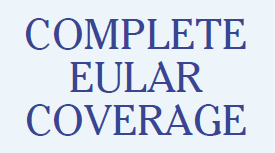 EULAR 2023—It is not enough to practice medicine by the book; rather, communication with patients and understanding their goals for patients are vital to high-quality care. At EULAR 2023, the session titled The Promise of Health Literacy in Clinical Care provided a treasure trove of insights for many clinicians.
EULAR 2023—It is not enough to practice medicine by the book; rather, communication with patients and understanding their goals for patients are vital to high-quality care. At EULAR 2023, the session titled The Promise of Health Literacy in Clinical Care provided a treasure trove of insights for many clinicians.
Definitions & Actions
The first speaker was Richard Osborne, BSc, PhD, director, Center for Global Health and Equity, and professor of health sciences, Swinburne University of Technology, Melbourne, Australia. Dr. Osborne defined health literacy and described how it can be measured.
He noted that health literacy is a way to understand an individual’s health information needs, the reasons some people struggle to look after themselves, why medication adherence and lifestyle change can be challenging, why many medical interventions are ineffective, and what the medical community needs to do to improve service quality.
A key publication on health literacy is the World Health Organization’s report Health Literacy Development for the Prevention and Control of Noncommunicable Diseases.1 It defines health literacy as “a social practice whereby decisions about health, and the available support to change to, or maintain, healthy behaviors, are determined by powerful and unique community norms and cultures, and organizational and political factors impacting communities.”
What does this mean in practical terms? Dr. Osborne explained that health literacy refers to people’s knowledge, confidence and comfort in accessing, understanding, appraising, remembering and using information about health and healthcare for their personal and family health. This does not just refer to health-related reading and writing: Dr. Osborne and colleagues have helped create a 44-question health literacy questionnaire that asks patients if they feel understood and supported by healthcare providers, have sufficient information to manage their health, can make plans for what they need to be healthy, and have the ability to find good health information.
This last topic is a double-edged sword in the internet era. On the one hand, it is easier than ever to access information from highly reputable sources, such as large academic medical centers and nonprofit health and advocacy organizations. At the same time, the promulgation of often confusing or misleading information about health and wellness seen on social media platforms, in discussion forums and gleaned from other sources can make it hard for patients to know what to believe.
With this in mind, Dr. Osborne laid out several steps to achieve success in addressing health literacy: 1) Measure a patient population’s strengths, challenges and preferences through health and electronic health (ehealth) questionnaires; 2) be responsive at the patient level: know how an individual prefers to learn, and match your care and patient education to this learning style. This also involves working effectively with patients using methods like “teach-back” and Conversational Health Literacy Assessment Tool (CHAT) questions; and 3) improve responsiveness at the organizational level by using health literacy responsiveness tools.
Value for Clinicians
The session’s second speaker was Mark Bakker, PhD candidate in health literacy, Maastricht University, Netherlands, and his presentation focused on the value of health literacy information to clinicians.
Dr. Bakker described work that he and his colleagues performed to explore longitudinal associations between health literacy profiles, disease activity, and medication prescribing patterns in patients with rheumatoid arthritis (RA).
In the study, 108 patients with RA were asked to complete the Health Literacy Questionnaire and were then categorized into one of three groups: several health literacy limitations; some health literacy limitations; or good health literacy. Patients with good health literacy were found to have significantly lower disease activity than those with several health literacy limitations (DAS-ESR 2.4 vs. 3.1). In addition, patients with good health literacy were most often prescribed biologic disease-modifying anti-rheumatic drug (bDMARD) therapy, whereas patients with several health literacy limitations were more often prescribed prednisolone than the other groups.2 These findings indicate that health literacy may be associated with disease activity and may influence prescribing patterns by doctors who take care of these patients.
Dr. Bakker also referenced the work of Dr. Osborne and colleagues with respect to Ophelia (OPtimising HEalth LIterAcy) Victoria, a partnership between two universities, eight service organizations and the government of Victoria, Australia, which sought to identify and respond to health literacy issues for people with chronic conditions. The program asked two main questions: 1) What are the health literacy strengths and weaknesses of clients of participating sites; and 2) how do sites interpret and respond to these to achieve positive health and equity outcomes for their clients?
The process involved three phases, the first being a needs assessment, the second involving frontline staff and management creating intervention plans to respond to local needs, and the third being a trial of interventions within each site to improve limitations to service access and/or health outcomes.3
Reflecting on this and other work, Dr. Bakker said his key takeaways are that diversity in health literacy needs must be considered to improve the impact of services and outcomes and that impactful health literacy actions are rooted in local context and generated by local wisdom.
Telehealth Considerations
The third speaker, Annette de Thurah, PhD, MPH, professor, Department of Rheumatology and Institute of Clinical Medicine, Aarhus University, Denmark, discussed how rheumatologists should and can be knowledgeable about health literacy when implementing telehealth services. She noted that barriers exist to the effective use of telehealth, including lack of training on telehealth activities for providers, issues of digital health literacy and digital safety, and lack of face-to-face contact as part of the doctor-patient relationship. However, telehealth also offers benefits in the form of accessibility, saving time and travel for patients, and providing flexibility to services rendered.
Dr. de Thurah described two projects she has been involved with in the rheumatology telehealth space. The first applies an algorithm to patient-reported outcome measures and laboratory study results to determine if and when patients with rheumatoid arthritis should be scheduled for a visit with their rheumatologist.
The second project is a telehealth program for patients with gout in which patients referred by their primary care provider are seen via telehealth by a rheumatologist to develop a treatment plan. The program then assesses patient-reported outcomes and allows for drug titration, education and counseling from nurses over several months. If patients can demonstrate two serum urate levels of less than or equal to 0.36 mmol/L in a three-month period, they can be referred back to their primary care provider for ongoing management.
In Sum
These projects and all the topics discussed in the session were innovative and eyeopening. The session clearly demonstrated that understanding and addressing health literacy is of great importance, not only in the field of rheumatology, but also across all specialties in medicine.

Jason Liebowitz, MD, is an assistant professor of medicine in the Division of Rheumatology at Columbia University Vagelos College of Physicians and Surgeons, New York.
References
- World Health Organization. Health literacy development for the prevention and control of noncommunicable diseases. 2022.
- Gorter A, Bakker MM, Ten Klooster PM, et al. The impact of health literacy: Associations with disease activity and medication prescription in patients with rheumatoid arthritis. Rheumatology (Oxford). 2023 Feb;kead094. doi:10.1093/rheumatology/kead094.
- Batterham RW, Buchbinder R, Beauchamp A, et al. The OPtimising HEalth LIterAcy (Ophelia) process: Study protocol for using health literacy profiling and community engagement to create and implement health reform. BMC Public Health. 2014 Jul;14:694.



